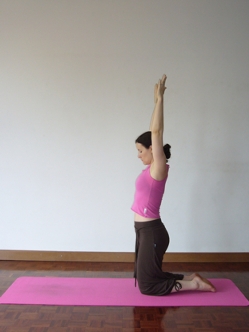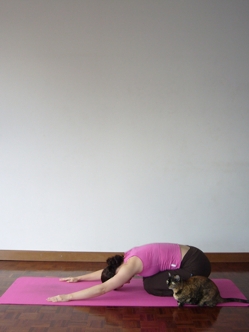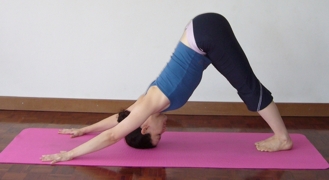There is nothing better than knowing that the item you just bought was paid for with money you actually have. I think our societal credit frenzy may in part come from losing sight of some of the basics. In yoga the basic principles of how to live in the world are called yamas. Yama is a Sanskrit word that can be translated as restraint, and they are:
- Ahimsa (non-harming)
- Satya (honesty)
- Asteya (non-stealing)
- Brahmacharya (responsible sexuality)
- Aparigraha (greedlessness)
The two that relate most to financial difficulties are asteya and aparigraha. We tend to think of steya (stealing) in its most obvious form: actual thievery. But there are many subtler forms of stealing – from ourselves, from the planet, from others. One way to steal from ourselves is to spend money we don’t have on stuff we don’t need. I did this in my early twenties: the day after I signed the contract for my very first job, I trotted out to buy a car on hire purchase (although I had a functional ‘student’ car) and open a clothing store account. I maxed the clothing store card on that very first day, and then spent the next few years trying to pay off the debt. Then I moved on to an actual credit card. Which I maxed. So I had clothing credit, bank credit and card credit to pay every month, and I always ran out of money before payday, so I had to spend more on my credit card. What a vicious circle. So I was basically stealing from my future prosperity in the interests of instant gratification. The other type of stealing inherent in this behaviour is the stealing from the planet by taking far, far more than you need. It was only once I realised this that I started I get my spending under control.
Taking only what you need is the practice of aparigraha – greedlessness. Basically, to practice aparigraha, you need to feel a sense of gratitude for what you have right now, and know that if you are in a position to be reading this, chances are you have as much as, if not more than, you need to survive comfortably. If you are like I used to be, and you think the perfect pair of shoes will actually make any difference, it may be interesting to examine why you really want the shoes, and whether you need them (really). Everything changes – we age, we gain and lose weight, we have prosperous years and not-so-prosperous years. If we try to base our sense of self-worth or contentment on these external things, we are doomed to failure.
It has been interesting for me, former shopping queen, to choose a simpler life in which clothes are what I wear, not who I am, and the illicit, sickening thrill of overspending no longer holds any appeal. I still like to shop, but these days I buy things I will get long use from, and I live a ‘Compact Lite’ life. The Compact are a group of people who have sworn off buying anything new for a year, except food, toiletries and underwear. I am not quite there yet, but I really admire what they are doing. Some of them are even on their second year – amazing!
If you find the idea of cutting down or changing your lifestyle intimidating, consider the areas that feel wrong – when you spend and you get that sick feeling, for example. Maybe just look at that one area and see if you can make small changes there. As with all things in yoga and life, you just need to become aware, and take baby steps, to start seeing a difference.











